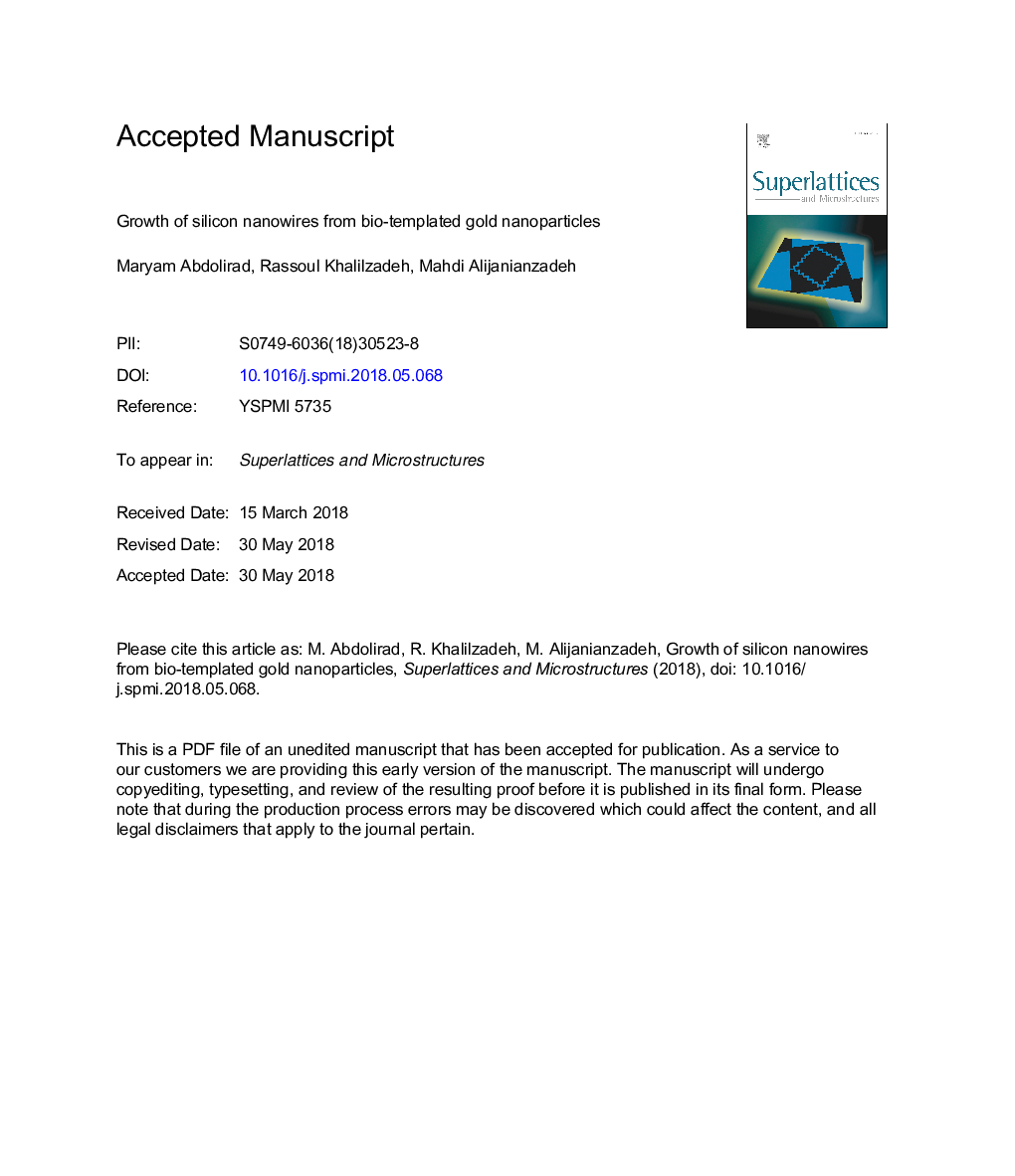| Article ID | Journal | Published Year | Pages | File Type |
|---|---|---|---|---|
| 7938675 | Superlattices and Microstructures | 2018 | 21 Pages |
Abstract
Silicon nanowires (SiNWs) have recently attracted considerable interest in a wide range of fields due to their quantum confinement effects and specific structures. Synthesis of silicon nanowires with high density and low diameter and also control over their growth direction and location are necessary to attain desired properties for applying in electronic devices. So, in this research a biological template was used to array nanoparticles catalyst and high density growth of nanowires. For this purpose, S-layers of Deinocaccus radiodurans have been used as template to pattern 4.5â¯nm Au nanoparticles (AuNPs) and arrayed nanoparticles have been utilized as catalyst to grow SiNWs by vapor-liquid-solid (VLS) procedure. Biotemplated SiNWs revealed low diameters, higher densities compared to SiNWs grown from nontemplated AuNPs on the silicon substrate. The results showed the protein template effect on the SiNWs morphology and grown SiNWs were analyzed by field emission scanning electron microscopy (FE-SEM), transmission electron microscopy (TEM) and energy dispersive spectroscopy (EDS).
Related Topics
Physical Sciences and Engineering
Materials Science
Electronic, Optical and Magnetic Materials
Authors
Maryam Abdolirad, Rassoul Khalilzadeh, Mahdi Alijanianzadeh,
